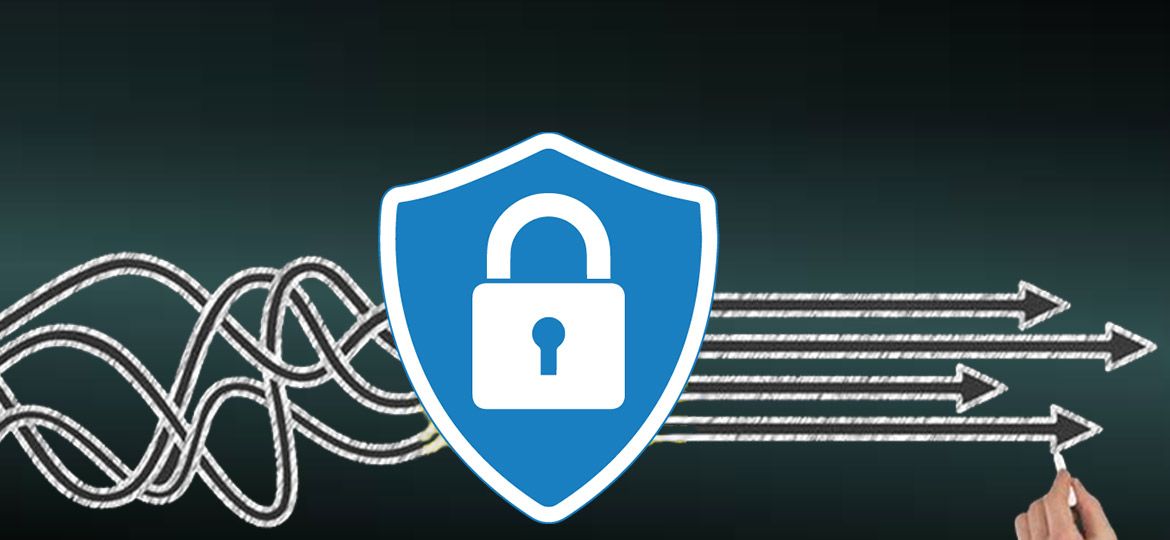
Today, every organization wants to set up the best team of security experts who can help improve and maintain the organization’s security infrastructure. However, we live in a digital world were technologies are growing exponentially. We must remember that if the cybersecurity professionals are leveraging on the latest technology to remain cyber resilient, the hackers too are leveraging on latest technologies to break into essential systems.
Therefore, it is imperative to know the latest cybersecurity trends that are being adopted around the world and keep your cybersecurity systems up-to-date. This ensures that cyberattacks don’t succeed in messing up the organization’s security.
We have listed the top cybersecurity trends being followed by organizations globally, read on and see if you are in tune with these trends.
#1 Adaptive MFA
Given how cybercrimes are on the rise, and hackers are improvising on their attacking methods, securing digital identities with just one-factor authentication is something most organizations are moving away from. Adaptive MFA that validates identities with multiple independent credentials via challenge-response questions, biometrics, soft tokens, SMS authentication, etc. is seen as a great way to secure and prevent unauthorized access. The global Multi-Factor Authentication (MFA) market was valued at 6230 million USD in 2018 and is expected to reach 16800 million USD by the end of 2024, growing at a CAGR of 18.0% between 2019 and 2024!
#2 Passwordless Authentication
The security professionals today have realized that passwords, which were once a means to secure identities, are today the greatest threat to security. Gone are the days when hackers would try hard and guess the password or use basic hacking skills to decode a password. As of 2019, attackers are armed with attacking techniques like password spraying, credential stuffing, dictionary attack, brute-force attack, etc. So, organizations today are opting for Passwordless Authentication methods like biometrics, OTP, push notifications, etc. According to Gartner, Passwordless Authentication is now a popular security trend that is achieving market traction.
#3 Cyber Security Automation
It is said that 95% of successful security attacks are the result of human error. Also, given how there is a shortage of cybersecurity skills in comparison to the growth of cybercrimes, organizations are opting to automate mundane yet important security processes that are usually prone to glitches as they are human-driven, to achieve friction-less security.
Automating cybersecurity has benefits such as keeping track of both hardware and software assets, performing vulnerability assessments, streamlining workflows, enhancing productivity, etc. According to a study, The U.S. is embracing automation at a faster pace than in other areas, with 79 percent of respondents saying they already use automation, or are planning to in the next three years
#4 Adherence to Data Privacy Regulation
In May 2018, the GDPR (General Data Protection Regulation) was rolled out, and organizations started evaluating their existing security protocols and started adhering to GDPR for better security, reducing costs, aligning with evolving technologies, and improved customer experience.
According to Bart Willemsen, Senior Director Analyst, Gartner, “These privacy requirements dramatically impact an organization’s strategy, purpose, and methods for processing personal data. Furthermore, breaches of these requirements carry financial, reputational and regulatory implications.”
Therefore, these are the top trends that organizations around the world are aligning to for better security and combating cybercrimes.
As the world embraces digitization, furthermore, you will see more and more cybersecurity trends being adopted. Let’s take a sneak peek at cybersecurity trends that will be prevalent in the upcoming year.
Top cybersecurity trends to look out for in 2020!
#1 Increase in security budgets
Organizations are willing to invest a lot more in cybersecurity; and this is not just limited to conglomerates, even the small and mid-sized companies intend to make investments in cybersecurity. One reason being, the ROI on investing in security is incredibly high. According to Gartner, Worldwide IT spending is projected to total $3.7 trillion in 2019, and Global IT spending is expected to rebound in 2020 with forecast growth of 3.7%, primarily due to enterprise software spending.
#2 Focus on cloud security
With most companies moving or planning to move in the cloud, the focus will surely be on cloud security. It is said that 83% of the enterprise workloads will be in the cloud by 2020. Most organizations will leverage on CASB (cloud access security broker) solutions to enhance cloud infrastructure and security.
#3 Resolving talent crisis
This is certainly a trend to look out for. It is observed that over the years, to combat the ever-growing cybercrimes, we fall short of professionals who are well-versed and skilled in all the areas of cybersecurity. Organizations look forward to providing extensive training and building a skilled and robust cybersecurity workforce.
#4 Consumption of security feed
Security professionals are exploring better ways to secure the organization and are hungry for the latest cybersecurity trends in the news. They are following famed security professionals and influencers, gathering information from relevant blogs and websites, attending sessions and events about security best practices, listening to podcasts and following informative YouTube channels like IBM Security and Sophos , and checking on alert feeds and advisory sites such as have I been Pwned, US-CERT, SecurityFocus, etc.
So, as you try and leave no stone unturned in creating an incredible cybersecurity posture to protect your organization from massive cyberattacks, keeping your cybersecurity up-to-date with the latest trends that are being adopted around the world will always keep you ahead of the game.
